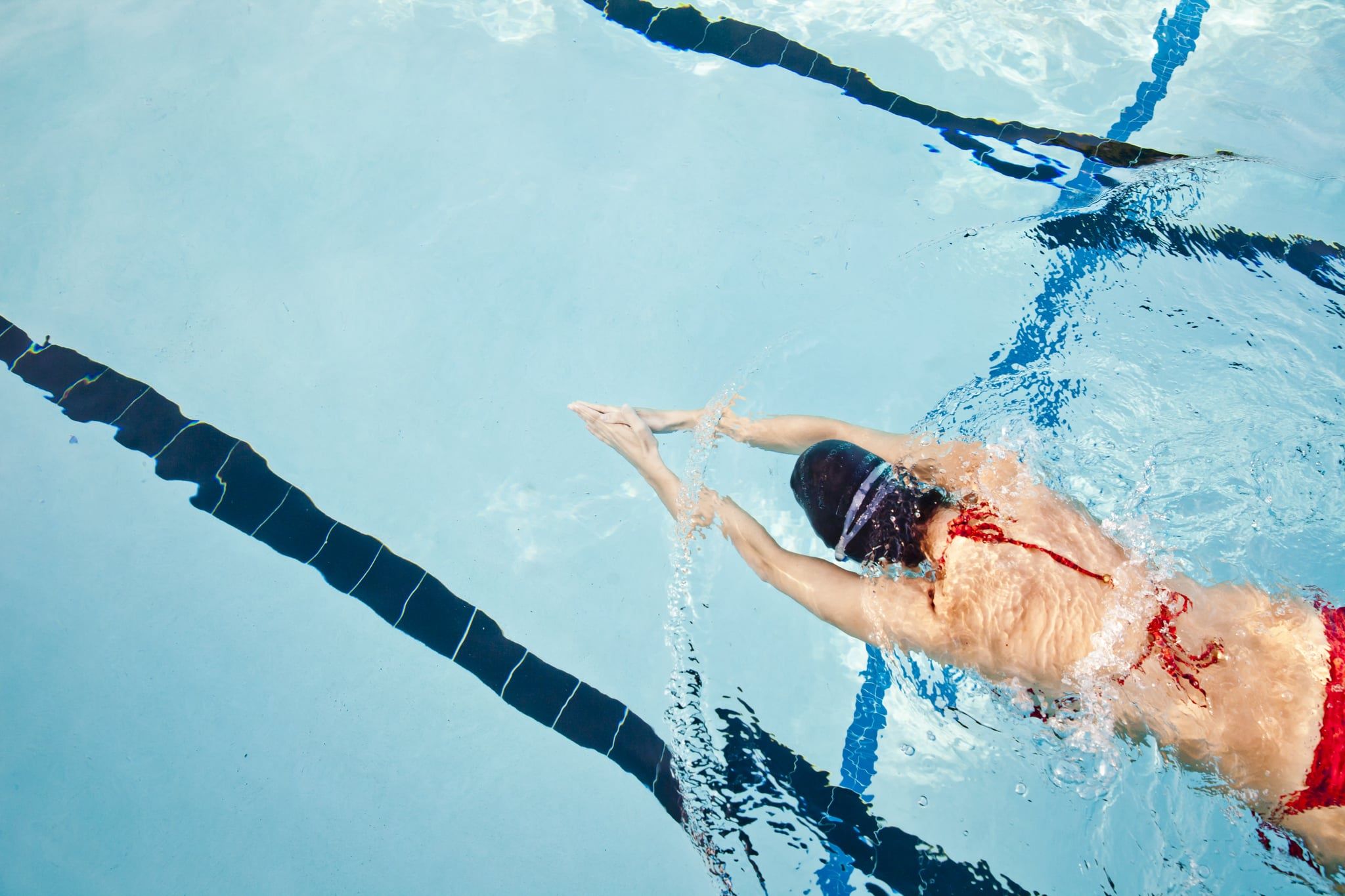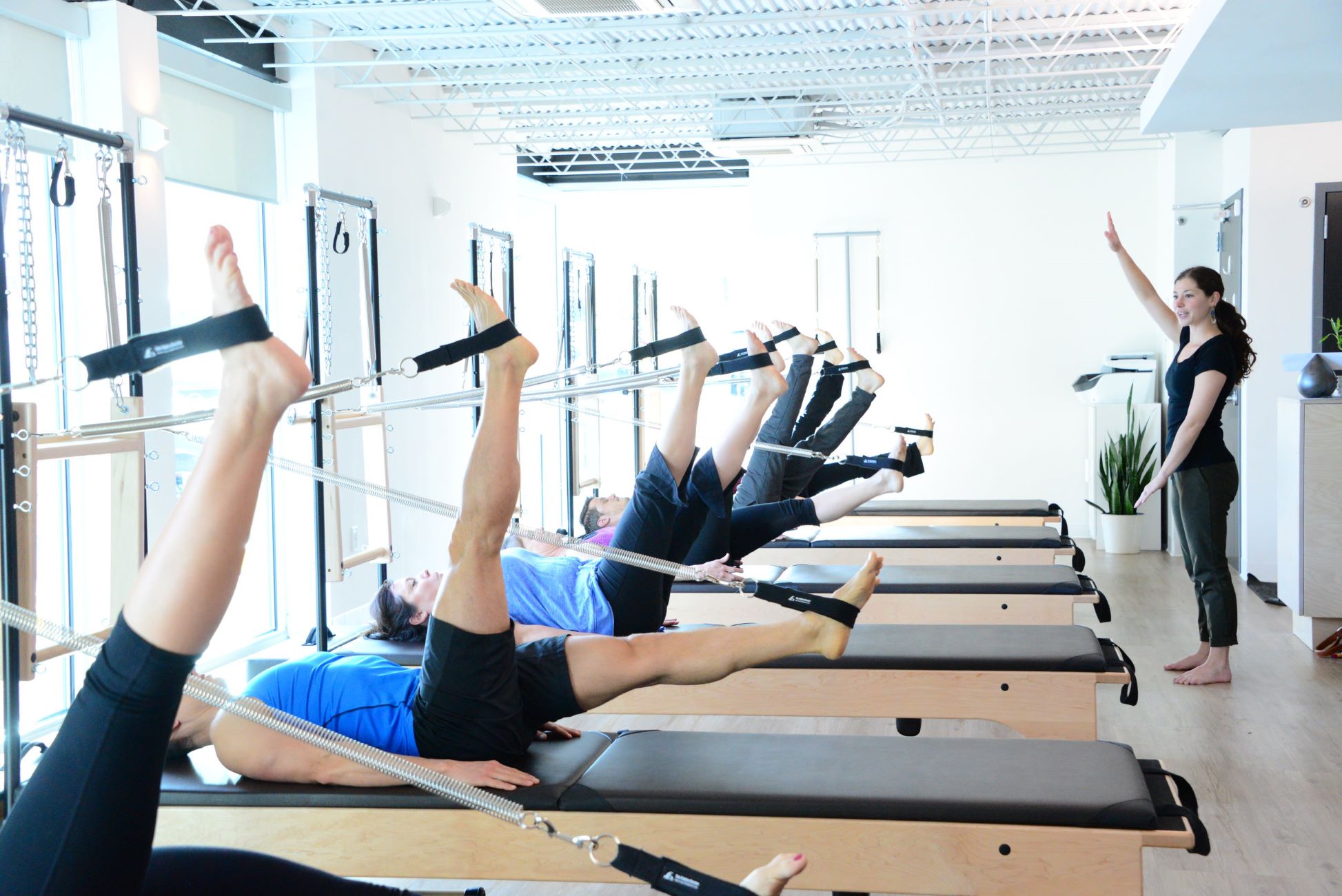Home>Training & Techniques>Cross-Training>The Benefits Of Swimming For Runners: 5 Reasons To Dive In


Cross-Training
The Benefits Of Swimming For Runners: 5 Reasons To Dive In
Published: February 20, 2024
Discover the benefits of swimming for runners and why it's an effective form of cross-training. Dive into 5 reasons to incorporate swimming into your training regimen.
(Many of the links in this article redirect to a specific reviewed product. Your purchase of these products through affiliate links helps to generate commission for Therunningadvisor.com, at no extra cost. Learn more)
Table of Contents
Introduction
As a runner, you're no stranger to the exhilarating rush of endorphins and the liberating feeling of pushing your physical limits. However, have you ever considered incorporating swimming into your training regimen? While running undoubtedly offers a myriad of benefits, swimming can complement and enhance your overall fitness in ways that may surprise you. Whether you're a seasoned marathoner or a casual jogger, diving into the world of swimming can elevate your performance, prevent injuries, and provide a refreshing change of pace.
In this article, we'll explore the compelling reasons why runners should embrace swimming as a cross-training activity. From improved cardiovascular endurance to mental rejuvenation, the advantages of adding swimming to your routine extend far beyond the pool. So, lace up your virtual goggles and get ready to dive into the transformative benefits of swimming for runners.
Improved Cardiovascular Endurance
Swimming is a powerhouse when it comes to enhancing cardiovascular endurance, making it an invaluable cross-training activity for runners. Unlike running, which primarily engages the lower body, swimming demands the synchronized effort of both the upper and lower body, along with controlled breathing. This full-body engagement elevates your heart rate, effectively strengthening your heart and lungs. As you glide through the water, your cardiovascular system is pushed to adapt and perform at a heightened level, ultimately boosting your endurance capacity.
One of the key advantages of swimming for cardiovascular endurance is its low-impact nature. Unlike the repetitive pounding experienced during running, swimming provides a gentle yet effective form of aerobic exercise. This low-impact characteristic is particularly beneficial for runners seeking to minimize the strain on their joints and muscles while still reaping the rewards of a challenging cardiovascular workout. By reducing the risk of overuse injuries commonly associated with running, swimming offers a sustainable avenue for improving endurance without subjecting your body to excessive stress.
Furthermore, swimming encourages rhythmic breathing patterns, which are essential for enhancing lung capacity and oxygen utilization. The controlled breathing technique required in swimming not only optimizes your respiratory efficiency but also cultivates mental discipline and focus. As a runner, this synchronized breathing practice can translate into improved breath control and overall performance during runs, enabling you to maintain a steady pace and conquer longer distances with greater ease.
Incorporating swimming into your training routine can also break the monotony of solely relying on running for cardiovascular conditioning. The dynamic nature of swimming introduces a refreshing challenge that stimulates different muscle groups and movement patterns, ultimately preventing workout plateaus and promoting overall fitness diversity. By diversifying your cardiovascular training through swimming, you can cultivate a more resilient and adaptable cardiovascular system, equipping you with the endurance to conquer various terrains and distances during your runs.
In essence, swimming serves as a catalyst for elevating your cardiovascular endurance, offering a low-impact yet highly effective means of fortifying your heart, lungs, and overall aerobic capacity. By embracing the aquatic realm, runners can harness the transformative power of swimming to enhance their cardiovascular endurance and unlock new levels of performance on the track, trail, or road.
Reduced Risk of Injury
Swimming presents a compelling proposition for runners seeking to mitigate the risk of injury while maintaining their fitness momentum. The buoyancy of water serves as a protective cushion, significantly reducing the impact and stress exerted on the body compared to the relentless pounding experienced during running. This inherent property of water makes swimming an ideal cross-training activity for runners, offering a reprieve from the constant strain on weight-bearing joints and muscles.
One of the primary contributors to injury prevention in swimming is its low-impact nature. Unlike running, which subjects the body to repetitive micro-traumas and high forces with each stride, swimming provides a gentle yet effective form of exercise. This reduced impact minimizes the likelihood of overuse injuries, stress fractures, and musculoskeletal imbalances commonly associated with running. By incorporating swimming into their training regimen, runners can proactively safeguard their bodies against the perils of excessive strain and repetitive stress, thereby prolonging their running longevity and overall athletic career.
Moreover, swimming offers a unique avenue for active recovery and rehabilitation. The water's resistance facilitates a comprehensive yet gentle workout, promoting muscular strength and flexibility without imposing undue strain. This aspect is particularly beneficial for runners recovering from injuries or seeking to address existing imbalances. By engaging in swimming, runners can effectively cross-train while allowing their bodies to recuperate from the demands of running, fostering a holistic approach to injury management and prevention.
Additionally, swimming encourages symmetrical movement patterns and balanced muscle engagement, which are essential for minimizing the risk of asymmetrical imbalances and overuse injuries prevalent in running. The fluid nature of swimming movements promotes a harmonious distribution of effort across the body, mitigating the likelihood of developing muscle imbalances and compensatory mechanisms that can lead to injuries. By integrating swimming into their training routine, runners can cultivate a more resilient and balanced musculoskeletal system, fortifying themselves against the vulnerabilities that often accompany unidirectional movement patterns inherent in running.
Furthermore, swimming serves as a catalyst for enhancing core stability and overall body awareness, both of which are pivotal for injury prevention in running. The engagement of core muscles during swimming not only fosters a strong and stable midsection but also translates into improved posture and biomechanical efficiency, reducing the risk of overloading certain muscle groups and joints during running. By honing their core strength and proprioceptive skills through swimming, runners can fortify their bodies against the destabilizing forces that predispose them to injury, ultimately fostering a more resilient and injury-resistant physique.
In essence, swimming stands as a formidable ally in the pursuit of injury prevention for runners, offering a sanctuary of low-impact, balanced, and restorative exercise. By embracing swimming as a complementary cross-training activity, runners can proactively safeguard their bodies against the perils of overuse injuries, asymmetrical imbalances, and muscular strain, thereby fostering a sustainable and injury-resilient running journey.
Full-Body Workout
Swimming stands as a paragon of full-body workouts, encompassing a symphony of muscular engagement and dynamic movement patterns that transcend the confines of traditional land-based exercises. Unlike running, which predominantly targets the lower body, swimming demands the harmonious coordination of the upper and lower body, along with the core, to propel you through the water with grace and power.
The multifaceted nature of swimming renders it a comprehensive and holistic form of exercise, engaging a myriad of muscle groups in unison. As you execute each stroke, your arms, shoulders, and back undergo a rigorous workout, propelling you forward while sculpting upper body strength and endurance. The resistance offered by the water amplifies the intensity of these movements, fostering muscular development and toning without the need for cumbersome weights or equipment.
Simultaneously, the lower body is not exempt from the aquatic symphony, as the legs execute powerful kicks and rhythmic fluttering motions to propel you through the water. This concerted effort engages the quadriceps, hamstrings, glutes, and calves, fostering lower body strength, endurance, and agility. The continuous resistance encountered during each kick cultivates muscular resilience and power, contributing to enhanced propulsion and overall lower body conditioning.
Moreover, swimming places a premium on core engagement and stability, as the torso serves as the fulcrum for each stroke and kick. The rotational movements inherent in swimming demand a strong and stable core, prompting the engagement of abdominal, oblique, and lower back muscles. This holistic activation of the core not only fortifies your midsection but also translates into improved posture, balance, and overall body control, essential for runners seeking to optimize their biomechanical efficiency and reduce the risk of injury.
The dynamic nature of swimming movements, coupled with the resistance offered by the water, fosters a balanced and symmetrical development of muscle groups, mitigating the likelihood of imbalances and asymmetries that can compromise athletic performance and predispose individuals to injuries. By engaging in swimming as a full-body workout, runners can cultivate a harmonious and resilient musculoskeletal system, equipping themselves with the strength, endurance, and balance necessary to excel in their running pursuits.
In essence, swimming transcends the boundaries of conventional workouts, offering a holistic and dynamic full-body exercise that fortifies and sculpts the entire physique. By embracing swimming as a cornerstone of their cross-training regimen, runners can harness the transformative power of aquatic exercise to cultivate a balanced, resilient, and functionally adept body, primed for the rigors of running and the diverse challenges of everyday movement.
Mental Refreshment and Stress Relief
Amidst the relentless cadence of running and the demands of everyday life, the tranquil embrace of the water beckons as a sanctuary of mental rejuvenation and stress relief. Swimming transcends the realm of physical exercise, offering a profound respite for the mind and spirit, making it an indispensable asset for runners seeking holistic well-being.
The rhythmic ebb and flow of swimming movements, coupled with the weightless embrace of the water, create an immersive sensory experience that fosters a profound sense of mental calm and tranquility. As you glide through the water, the gentle resistance and buoyancy envelop you in a cocoon of serenity, allowing the mind to unfurl and release the burdens of stress and tension. The meditative quality of swimming, characterized by the rhythmic breathing and fluid movements, serves as a therapeutic balm for the mind, offering a reprieve from the cacophony of daily pressures and mental clutter.
Moreover, the immersive nature of swimming engenders a sense of mindfulness and presence, compelling you to be fully attuned to the sensations and rhythms of the aquatic environment. The act of submerging into the water, with each stroke and kick, fosters a profound connection with the present moment, allowing you to relinquish the weight of past anxieties and future uncertainties. This mindful immersion in the aquatic realm cultivates a heightened sense of mental clarity and focus, enabling you to recalibrate and rejuvenate your mental faculties, essential for runners navigating the rigors of training and life's myriad challenges.
Furthermore, swimming serves as a conduit for emotional release and rejuvenation, providing an avenue for catharsis and introspection. The fluidity of swimming movements, coupled with the enveloping embrace of the water, creates a nurturing space for emotional expression and release. As you glide through the water, the rhythmic cadence of your strokes and the soothing embrace of the aquatic environment facilitate the release of pent-up emotions and mental fatigue, fostering a sense of emotional lightness and renewal.
In essence, swimming transcends the boundaries of physical exercise, offering a sanctuary of mental refreshment and stress relief for runners seeking to harmonize their mind, body, and spirit. By immersing themselves in the tranquil embrace of the water, runners can cultivate a profound sense of mental calm, mindfulness, and emotional release, fortifying themselves with the mental resilience and serenity necessary to navigate the complexities of running and life with grace and equanimity.
















